Research on the Force-Sensitive Characteristic of InAs QD Embedded in HEMT
Abstract
:1. Introduction
2. Structure Design
3. Experimental Test
3.1. Electrical Characteristic
3.2. The Detection Principle of Force-Sensitive
3.3. Force-Sensitive Characteristic
4. Conclusions
Author Contributions
Funding
Conflicts of Interest
References
- Shi, Y.B.; Guo, H.; Ni, H.Q.; Xue, C.Y.; Niu, Z.C.; Tang, J.; Liu, J.; Zhang, W.D.; He, J.F.; Li, M.F.; et al. Optimization of the GaAs-on-Si Substrate for Microelectromechanical Systems (MEMS) Sensor Application. Materials 2012, 5, 2917–2926. [Google Scholar] [CrossRef]
- Song, P.; Ma, Z.; Ma, J.; Yang, L.; Wei, J.; Zhao, Y.; Zhang, M.; Yang, F.; Wang, X. Recent Progress of Miniature MEMS Pressure Sensors. Micromachines 2020, 11, 56. [Google Scholar] [CrossRef] [Green Version]
- Starr, P.; Bartels, K.; Agrawal, M.; Bailey, S. Evolution of Micromachined Pressure Transducers for Cardiovascular Applications. Sens. Actuators A Phys. 2015, 225, 8–19. [Google Scholar] [CrossRef]
- Beck, R.G.; Eriksson, M.A.; Westervelt, R.M.; Maranowski, K.D.; Gossard, A.C. Measuring the Mechanical Resonance of a Gaas/Algaas Cantilever using a Strain- Sensing Field-Effect Transistor. Semicond. Sci. Technol. 1998, 13, A83–A85. [Google Scholar] [CrossRef]
- Ahmed, A.; Mohammed, S.; Moussa, W.A.; Lou, E. Optimization of Geometric Characteristics to Improve Sensing Performance of MEMS Piezoresistive Strain Sensors. J. Micromech. Microeng. 2010, 20, 015015. [Google Scholar]
- Vanko, G.; Dzuba, J.; Ryger, I.; Vallo, M.; Lalinsk, T. MEMS Pressure Sensor with an AlGaN/GaN based on High Electron Mobility Transistor. Adv. Manuf. Electron. Microsys. 2015, 4, 290–293. [Google Scholar]
- Bannikoppa, S.; Katageri, A.C.; Balavalad, K.B. Design of Piezoresistive Pressure Sensor for Enhanced Sensitivity. In Proceedings of the 2016 International Conference on Energy Efficient Technologies for Sustainability (ICEETS), Nagercoil, India, 7–8 April 2016; pp. 706–710. [Google Scholar]
- Basov, M. High-Sensitivity MEMS Pressure Sensor Utilizing Bipolar Junction Transistor with Temperature Compensation. Sens. Actuators A Phys. 2020, 303, 111705. [Google Scholar] [CrossRef]
- Nguyen, H.Q.; Nguyen, T.; Tanner, P. Piezotronic Effect in a Normally Off p-GaN /AlGaN/ GaN HEMT toward Highly Sensitive Pressure Sensor. Appl. Phys. Lett. 2021, 118, 242104. [Google Scholar] [CrossRef]
- Zimmermann, T.; Neuburger, M.; Benkart, P.; Hernandez-Guillen, F.J.; Pietzka, C.; Kunze, M.; Daumiller, I.; Dadgar, A.; Krost, A.; Kohn, E. Piezoelectric GaN Sensor Structures. Electron Device Lett. IEEE 2006, 27, 309–312. [Google Scholar] [CrossRef]
- Yilmazoglu, O.; Mutamba, K.; Pavlidis, D.; Mbarga, M.R. Strain Sensitivity of AlGaN/GaN HEMT Structures for Sensing Applications. IEICE Trans. 2006, 89, 1037–1041. [Google Scholar] [CrossRef]
- Tan, X.; Lv, Y.J.; Zhou, X.Y.; Wang, Y.G. AlGaN/GaN Pressure Sensor with a Wheatstone Bridge Structure. AIP Adv. 2018, 8, 085202. [Google Scholar] [CrossRef]
- Dzuba, J.; Vanko, G.; Drzik, M.; Ryger, I.; Kutis, V.; Zehetner, J.; Lalinsky, T. AlGaN/GaN Diaphragm-Based Pressure Sensor with Direct High Performance Piezoelectric Transduction Mechanism. Appl. Phys. Lett. 2015, 107, 122102. [Google Scholar] [CrossRef]
- Xue, C.Y.; Tan, Z.X.; Hou, T.T.; Liu, G.W.; Liu, J.; Zhang, B.Z. Temperature-Dependence Electrical Performance of GaAs-Based HEMT-Embedded Accelerometer. In Proceedings of the 2010 5th IEEE International Conference on Nano/Micro Engineered and Molecular Systems, Xiamen, China, 20–23 January 2010. [Google Scholar]
- Liu, K.; Zhu, H.; Feng, S.; Shi, L.; Zhang, Y.; Guo, C. The Effect of External Stress on the Electrical Characteristics of AlGaN/GaN HEMTs. Microelectron. Reliab. 2015, 55, 886–889. [Google Scholar] [CrossRef]
- Le Boulbar, E.D.; Edwards, M.J.; Vittoz, S.; Vanko, G.; Brinkfeldt, K.; Rufer, L.; Johander, P.; Lalinsky, T.; Bowen, C.R.; Allsopp, D.W.E. Effect of Bias Conditions on Pressure Sensors Based on AlGaN/GaN High Electron Mobility Transistor. Sens. Actuators A. 2013, 194, 247–251. [Google Scholar] [CrossRef]
- Tan, Z.; Xue, C.; Hou, T.; Liu, J.; Zhang, B.; Zhang, W. Temperature Effects of Piezoresistance Coefficient. Chin. Phys. Lett. 2010, 27, 088505. [Google Scholar]
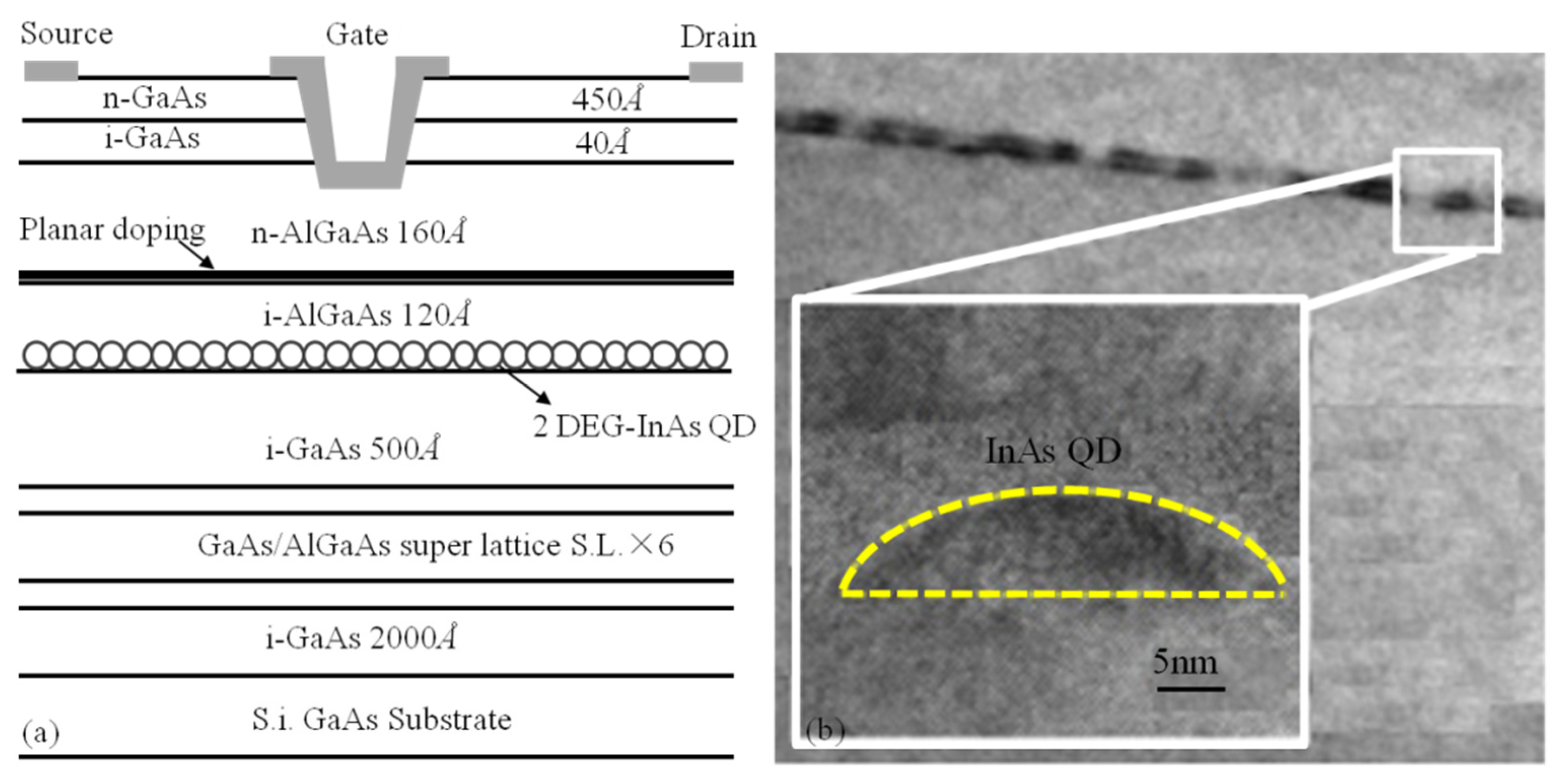
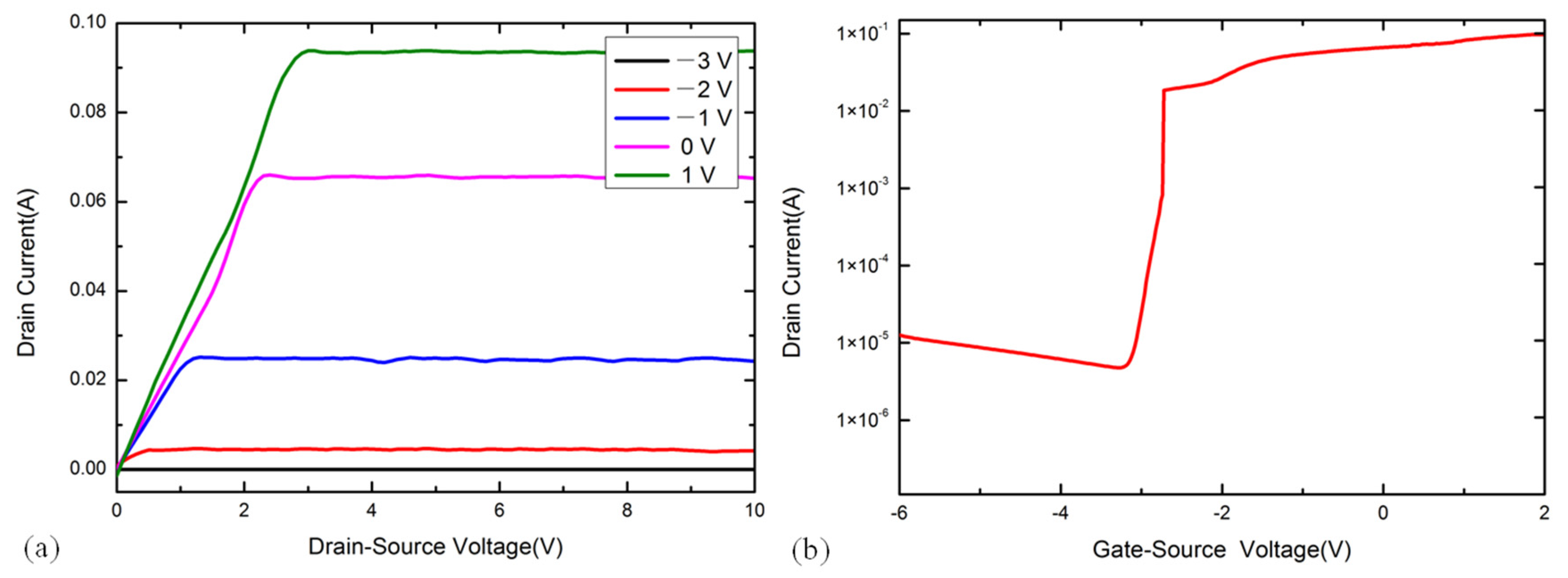

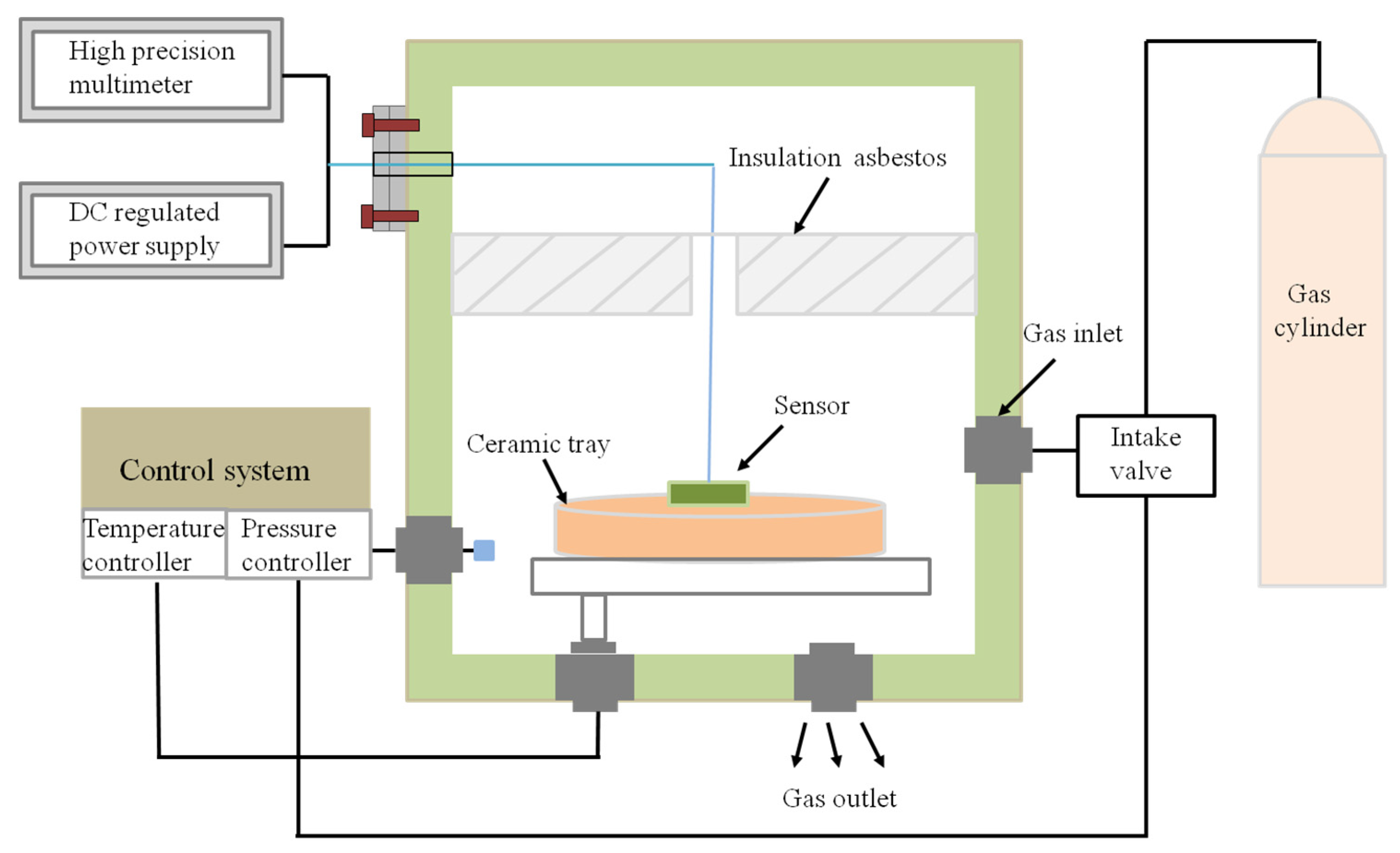
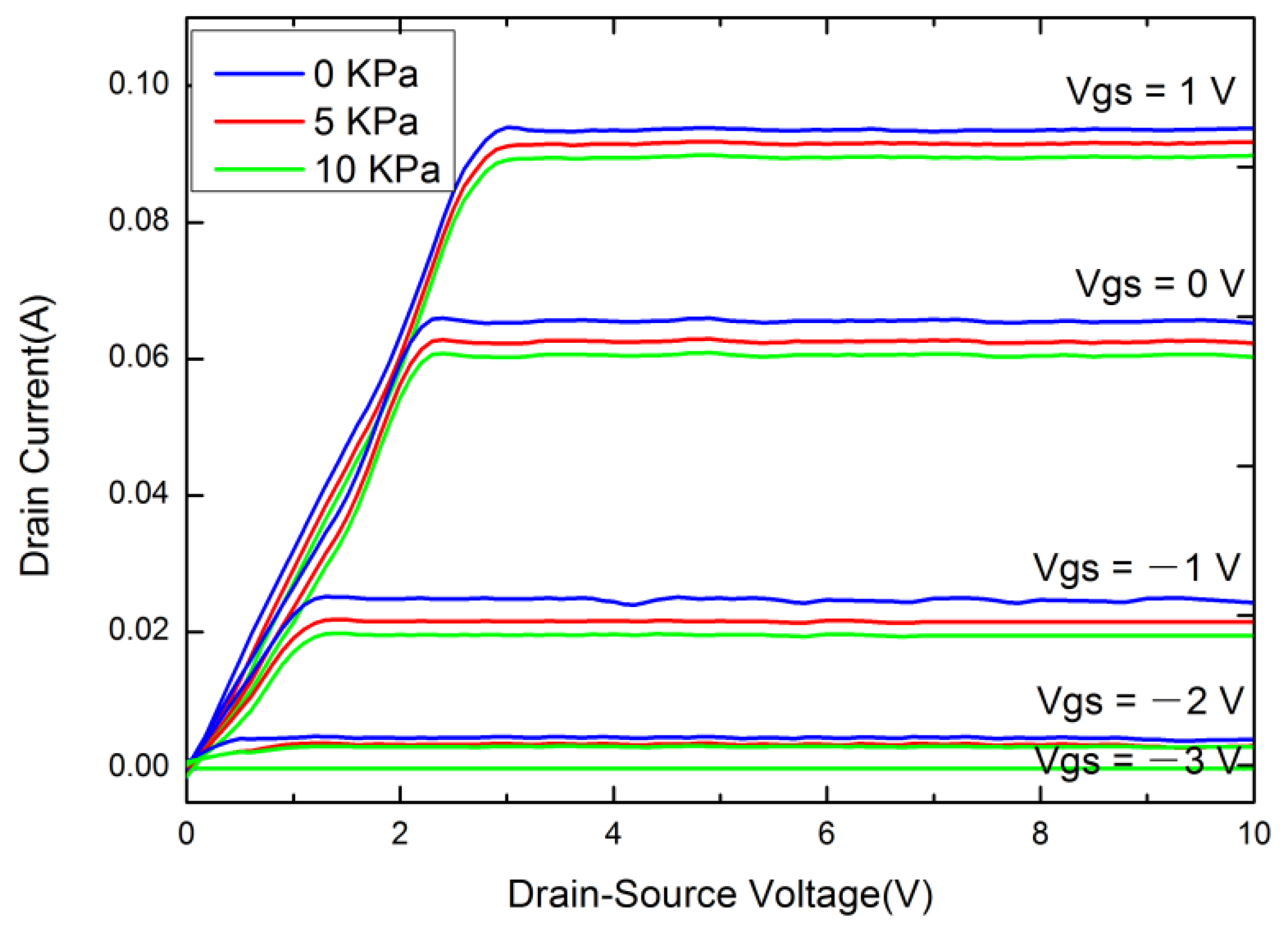
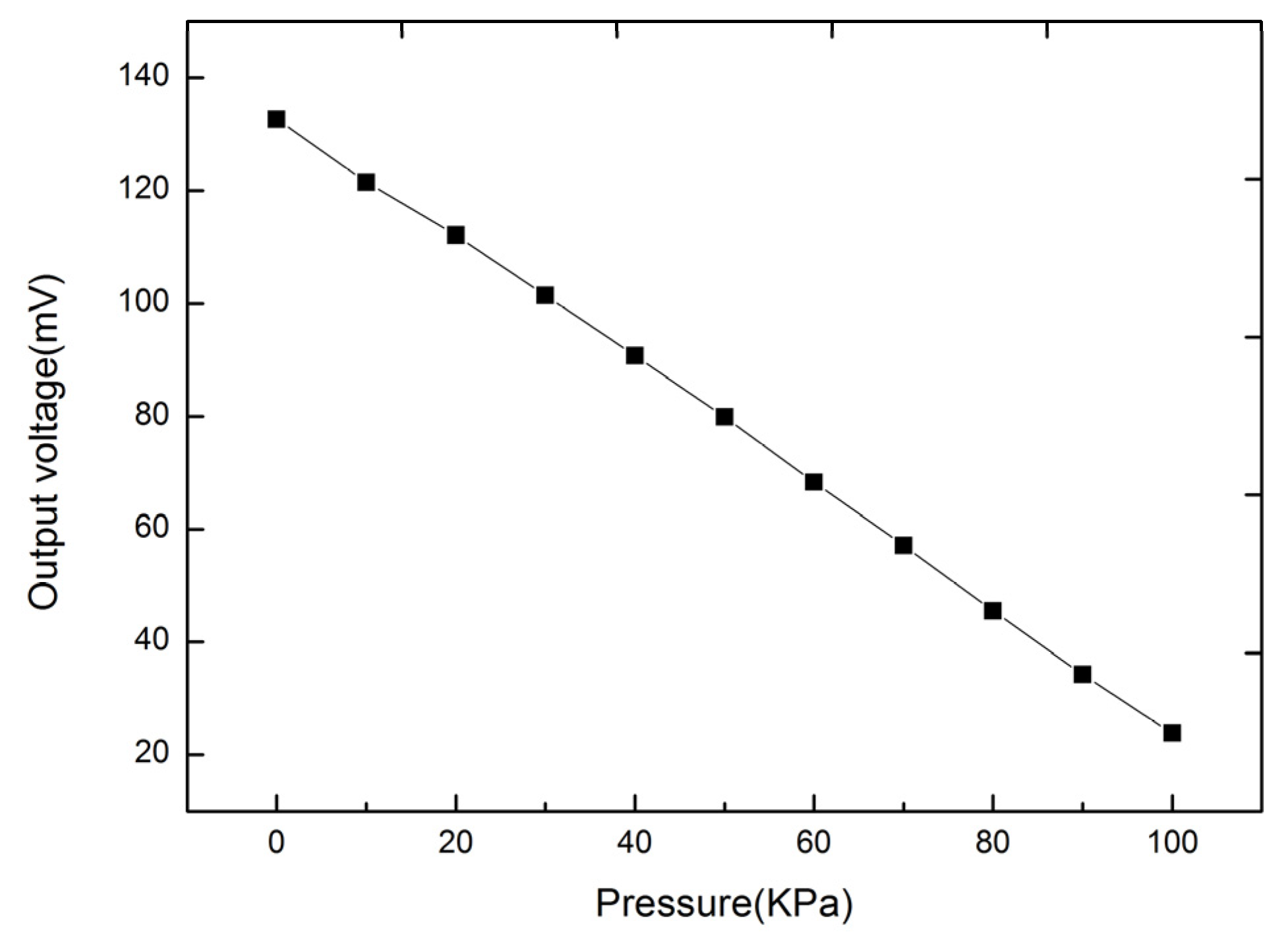
Publisher’s Note: MDPI stays neutral with regard to jurisdictional claims in published maps and institutional affiliations. |
© 2021 by the authors. Licensee MDPI, Basel, Switzerland. This article is an open access article distributed under the terms and conditions of the Creative Commons Attribution (CC BY) license (https://creativecommons.org/licenses/by/4.0/).
Share and Cite
Wang, R.-R.; Guo, H.; Tang, J.; Liu, J.-P.; Liu, L.-S. Research on the Force-Sensitive Characteristic of InAs QD Embedded in HEMT. Micromachines 2021, 12, 1413. https://doi.org/10.3390/mi12111413
Wang R-R, Guo H, Tang J, Liu J-P, Liu L-S. Research on the Force-Sensitive Characteristic of InAs QD Embedded in HEMT. Micromachines. 2021; 12(11):1413. https://doi.org/10.3390/mi12111413
Chicago/Turabian StyleWang, Rui-Rong, Hao Guo, Jun Tang, Jin-Ping Liu, and Li-Shuang Liu. 2021. "Research on the Force-Sensitive Characteristic of InAs QD Embedded in HEMT" Micromachines 12, no. 11: 1413. https://doi.org/10.3390/mi12111413
APA StyleWang, R.-R., Guo, H., Tang, J., Liu, J.-P., & Liu, L.-S. (2021). Research on the Force-Sensitive Characteristic of InAs QD Embedded in HEMT. Micromachines, 12(11), 1413. https://doi.org/10.3390/mi12111413




